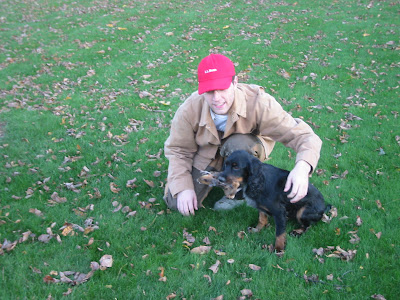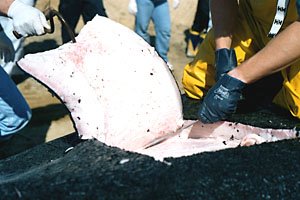(This post first appeared on December 1, 2009. Updates including today's appear below in chronological order.)
A 20 gauge Mossberg 500 was my first shotgun. I killed a few pheasants with it, quite a few snowshoe hares, and even my first whitetail. I liked the tang safety. But the takedown screw that secured the barrel to the frame was forever loose, and I had to tighten it down every 5 minutes to prevent the next shot from sending both load and barrel down field.The 20 gauge has wandered in and out of favor with me ever since. When I first read Gene Hill describe it as “bitey,” I was reminded of my ill-advised SKB 20 gauge SxS “goose gun” that shot from both ends. There've been many years when I completed the seasons well enough without a 20 gauge gun in my safe.
Several years ago, though, a Don Zutz article turned my head more than the Swedish Bikini Team. He suggested that the 20 gauge O/U’s trim barrels, slender forearm, and grip conspired to form a right-feeling whole that handled better than the sum of its parts. When I thought about how well I've shot several 20 gauge O/Us on twitchy woodcock, I decided that Don had it right.
The 20 gauge O/U is commonly available “off the rack” weighing around 6 pounds 4 ounces, making it very well suited for upland hunting. At this weight, the gun can be carried “all day” – whatever that means for my challenged coverts – but is still heavy enough to encourage a full swing through my birds. And even if the “Rule of 96” is only loosely invoked, then a gun at this weight is more than comfortable when shooting a 7/8 ounce load.
Here’s how I had it figured in August, 2008:
”As most rough shooters ultimately do, I’ve settled on lighter weight arms, acknowledging that we carry a gun for much greater time periods than we shoot it. Here’s what I’ve saved.
My smallest-framed gun is a 20 gauge O/U, an L. L. Bean “New Englander” from B(atista) Rizzini. Since I don’t shoot registered 4-gun skeet, there’s really no pressing need for me to own a 28 gauge. A 20 can be almost as svelte – too much daintiness as an impediment to good shooting is a good topic for another day – and, when down-loaded with ¾ oz. loads, probably throws patterns just as effective as those from the much-hyped 28. This Rizzini has a rubber recoil pad, a plain fore end (no Schnabel) and a rounded pistol grip. As did Don Zutz, I find that my left hand is on plane with my right in a scaled 20 gauge O/U stocked this way, and strongly believe this adds a comfortable synergy to my shooting. Hunt records do not discourage me in this belief.”
B. Rizzini "New Englander" 20 Gauge O/U
”The New Englander is my gun of choice for woodcock and early season grouse. I rarely swap out the .005” and .010” choke tubes, and own no loads for it other than Remington’s STS20SC in #8 lead.Since then, I’ve switched to choke tubes that are nominally .000” and .005”, and if I have not scored as well on woodcock, then I’ve scored better.
This particular configuration is about as good as it gets for me. If I ever were to consider an upgrade, without question I’d work with Rich Cole in Maine to have a similar style gun built for me with a custom sized stock wrapped around the universally popular Beretta 686 action.”
When I peeked at Cole's website recently, I was pleased to see that he’ll not only cut a stock to my dimensions, but that he offers a nifty Prince of Wales grip as well.
Cole Custom 20 Gauge O/U
I’m partial to the relaxed radius in the grip and the bold but straight grain in this particular stock. If its hue had a bit more Hershey, and the pad were black, it would be awful damn near my ideal grouse and woodcock gun.When woodcock season ended recently, I concentrated on hunting pheasants with my 16 gauge RBL. I realized right away that I wasn't swinging the RBL like my New Englander. But it took me a while to figure out why not.
I am not especially tall, but I am slender enough – think Laurel, not Hardy - so that my arms are effectively quite long. Somewhere along the way I fell into shooting with a long left arm, and now that style feels as comfortable as fluffy dry socks in old boots. According to Michael Yardley, I'm not the first to shoot like this. At any rate, I discovered that I was "chicken winging" my left arm on the RBL's splinter forearm; and my swing felt much better after I began grabbing a bit more barrel. When I finally save up enough cash for a Cole Custom, I'll make sure Rich can make me a forearm similar in length to the New Englander's.
A light weight gun that carries and handles "just right," the 20 gauge O/U has earned a permanent spot in my safe.
December 20, 2009
This advert for Fausti’s Dea Duetto caught my eye. What a gorgeous forend for these small gauge doubles.
The Fausti sisters clearly appreciate long wood in their left hands.











































